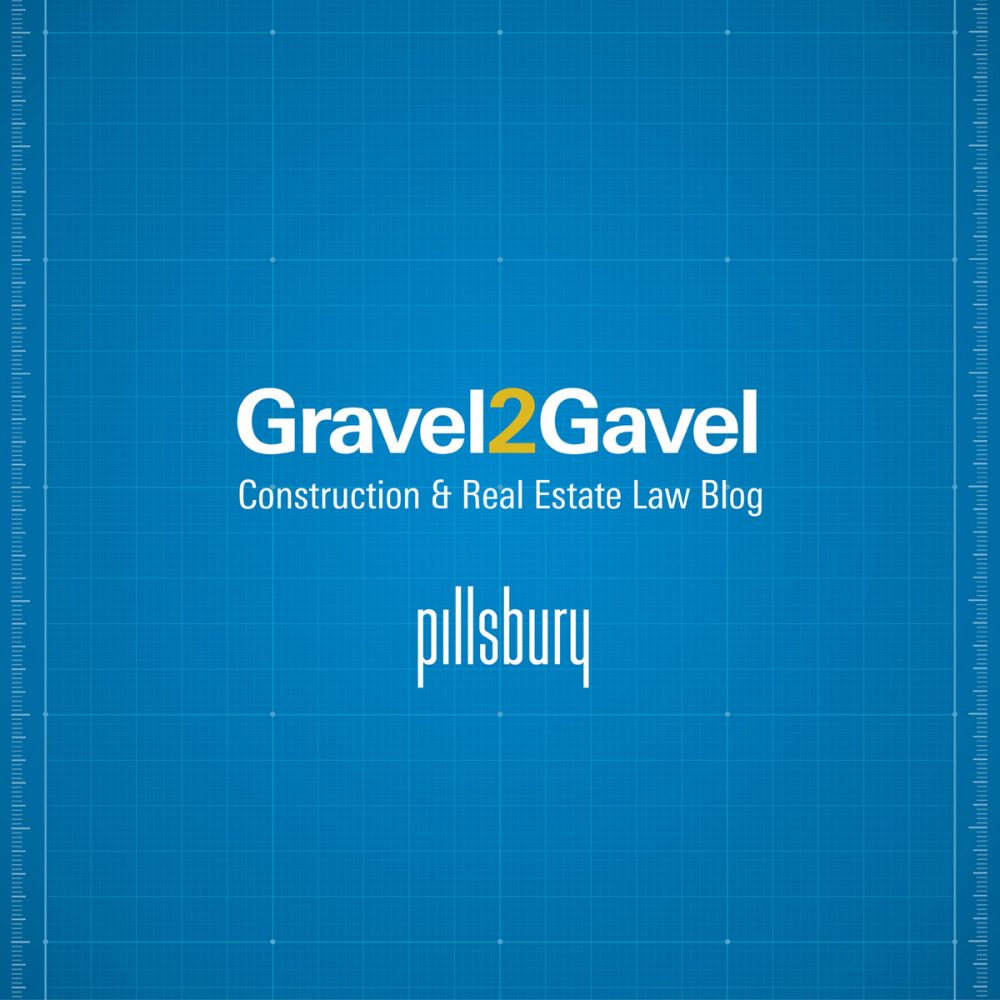Resilience: Transforming Energy Sector – The Solar M&A Landscape
In the latest episode of the Resilience podcast, colleague and host Shellka Arora-Cox sits down with Kevin Yaich, head of M&A at Qcells USA, for a discussion of the current solar M&A landscape.
(Editor’s note: The following transcript has been edited for clarity. From the heart of India resilience has shaped me. Welcome to Resilience, where we explore how resilience is driving transformation in the energy sector. Welcome to Resilience, where we explore how resilience is driving transformation in the energy sector.
Welcome to Resilience. The vodcast that navigates the twists and turn of the energy sector. Shellka Arora Cox is your host. She is a partner with Pillsbury Winthrop Shaw Pittman. Kevin Yaich, the head of M&A for Qcells USA, will be joining me today. Kevin Yaich and I will dive into the world of solar M&A. Whether you are a buyer, a seller or just curious about the market, this is one conversation you won’t want to miss.
Kevin, welcome.
Kevin Yaich:
Thank you. Thank you for having me!Arora-Cox:
Before we dive into the nitty gritty of the M&A market, can you shed some light on your journey? How did you end up as head of M&A at Qcells?Yaich:
So, as you can hear with my accent, I come from France. After I graduated from business school, I worked as an investment banking for J.P. Morgan. I was living the dream. I moved to New York. After a few years, I worked in private equity and then for NextEra Energy Resources, where I held different positions, including corporate development, M&A and renewable energy. I then joined Shikun & Binui – the largest Israeli IPP – to build their business in the U.S. from scratch. We went public. I then decided to embark on a new journey. I joined Qcells in the role of head of M& A and returned to my core skillset, a pure transactional skill-set. So very excited about this new journey and happy to talk a little bit about that and share my experience.Arora-Cox:
Before we drill into the market, let’s set the stage for our listeners about the macro picture. Can you tell us what you see in the solar M& A market today and where we stand? Are we in a sunny phase or is it a cloudy world out there when it comes to M&A?Yaich:
When you come to Romania, it’s sunny or cloudy, depending on which side of the table you are, right? You can be a buyer or seller. There is some uncertainty in the regulatory area right now. The elections are fast approaching. We see the valuations going down a bit. There is definitely an opportunity, but the valuations aren’t 30 percent lower than they were a few years ago. It’s just a trend of rising cost of capital and cost of equity. You’re experiencing this lag now. Interest rates will probably go down within the next six months, one year, or two years. I expect the cost of equity to be followed in the next year, and valuations should go up. You have a bit more product on the market. And again, it’s a supply and demand game, so that adjusts the valuation down, so that’s what we’re seeing in the market.Arora-Cox:
That touches on where I was going next, which is really what is driving the market at the moment. Is the market driven by finding the right strategy to match the perfect asset, or is something else at play? Could you unpack?
Yaich:
I would say there is a different dynamic in the market, for sure. You still have some new players–some very large IPPs that were recently acquired by large infrastructure fund, and who have aggressive goals to enter the U.S. They are new players, so they need to be aggressive in their M&A. But, again, you don’t see valuation going down significantly.
Arora-Cox: And is the security of the supply chain playing into the mix? Are you seeing that in the market?
Yaich: Yes. The timing is the number one factor in our market, right? When you buy a project for renewable energy, and especially at a later stage, the timing is determined by different types docs. You have your interconnection documents, your generator interconnection agreements (GIA). You may have your power purchase agreement and your long lead equipment. If these documents are not aligned then you will have a problem. I think there’s an opportunity for aggressive players who have taken a hedge or have the ability and skill to renegotiate those documents, GIA, or PPA. I think the opportunity arises either with long lead equipment that has been bought ahead of time or the ability to renegotiate offtake, renegotiate GIA–these types of things. I think the opportunity arises either with long lead equipment that has been bought ahead of time or the ability to renegotiate offtake, renegotiate GIA–those type of things.
The opportunities and the challenges lie in being able to have the perfect match and managing through that because the cost of the project can go up very quickly on the GIA side or on the PPA side, or if you don’t manage to secure equipment.
Arora-Cox:
What you’re alluding to is risk and reward–there are opportunities, but you have to come in at the right time.Yaich:
And knowledge. You need to know what is required on certain contracts. Understanding how long a project will take, and how difficult it is to build. In some states in the northern part of the U.S., you cannot build in the winter, so if you don’t account for that, then your entire project is out of sync.Arora-Cox:
You touched on some of the documents and talking about documentation. What do you see on the deal structuring front? Are buyers and sellers working with tried and tested documents or are there more inventive ways that people are navigating these transactions?[in play]Yaich:
The most common doc is a simple Membership Interest Purchase Agreement (MIPA) with milestone payment with the seller, all weighted more toward notice to proceed (NTP) or commercial operation date (COD). This type of structure has governed agreements for the past couple of years. However, there are now different flavors. They will only acquire the project if the offtake or at least shortlisting is completed. You will also see a willingness to split the risk of interconnection. You’ll also see other types of acquirors who are not willing take on early interconnection risk. They would structure a framework agreement, acquire an asset, sign a transaction, and close it only if upgrades or (safety-instrumented system) SIS are below or above a specific level. You have different options. I think that the players have been creative in their approach based on whether the buyer or seller is willing to share the risk. Many buyers will try to take advantage if they are in a difficult position. However, I believe that it is wise to keep your word. You have a contract, you shake hands and you have a termsheet. Keep your word and keep the deal, even if you find yourself in a difficult situation at some point. Don’t try and grab a few more cents or reps. Ultimately, it’s all about your word, your values, your relationships, your professional ethics.
Arora-Cox: It’s not just about one transaction. Like you mentioned, it’s about creating relations and building business over time.
Yaich: Exactly. You and I, for instance. How many transactions have we worked together?
Arora-Cox: Yes, I was thinking about that. We both know that there are no M&A deals without late nights and coffees. You said that it was a buyer’s’ market and that valuations were not as low as you would have expected. Is there a kind of tug of war that’s going on between sellers and buyers at the moment, or are buyers and sellers seeing eye to eye on what is fair determination?
Yaich: Ultimately valuation is driven by what returns the market is underwriting projects, by what assumptions are driving those returns in different directions based on how bullish or bearish you are on merchant curve or other type of assumptions.
But there is a consensus on valuation in most of the market based on the stage of the asset. I think that the buyer’s or seller’s situation will determine the valuation, plus or minus two percent from the current market. Imagine that you are a small investor in need of urgent capital recycling. You will be under pressure, in a distressed situation. So you’ll be willing to accept a lower price. If you’re a buyer, a large multi-billion dollar company, and you need to reach your earnings goals, whether they are in megawatts, or a certain amount you have to earn in a year, you’ll be willing to pay more to achieve those goals. When I say that it’s a buyers market, it’s not because of the risks in the market or the costs to do business. It’s just that the desire to acquire renewable projects outweighs the need to meet those goals. That dynamic makes it a little bit more favorable buyer market, with just more projects coming up for sale.
Arora-Cox:
Okay. Let’s change gears for a moment. Is it adding complexity to transactions or is it adding value to projects? Is it adding complexity to transactions or is it adding value to projects?
Yaich: I don’t think AI, from a technical standpoint, is changing my job or our job much day to day. You can search for documents quickly using some algorithms. This makes our lives easier. I think it’s also true on the legal side. It’s a bit more democratized among subject matter experts, right? I think that the immediate impact of AI will be its increased load on industry in general. The more computers that crunch data, the more power you need. There is a strong push towards renewables which indirectly creates a demand for them. The market is disrupted by the hyperscaling of demand. The grid is not prepared for it and is overloaded. This is something that has a direct impact on the markets. It makes it more interesting because all the teams are working together more than ever before. The developer must be able to site the project in locations that are more and more challenging.
Especially in the Platinum Group Metals (PGMs) market where–this is not flat land. This is not Arizona, or the central U.S. It is hilly. It’s very wet. You have to build water-retention basins and other things of that nature. Building projects close to the load is becoming more and more challenging, technologically.That means your EPC team must work very well with your development team to anticipate the potential risk of siting a project, and your origination team must identify your potential buyer of power and make sure that the shape of the power and the battery capacity, for example, match their true need. Data centers have a unique shape that does not match the production profile of wind turbines or solar plants. So I think there is a lot of creativity, a lot of work that has been done by all the team to be able to adapt to this new demand.
Arora-Cox: That is a good segue into the next question. If you had a crystal ball and were to look into it, what trends do you think will shape the M&A market over the next few years?
Yaich:
I was talking with some colleagues of mine about this. This is a buyer’s market. We have a concentration of buyers right now. Is this a phase? I would say that from a pure M&A perspective we need to continue to be creative and really understand the different risks. Making sure all the pieces of a puzzle fit together and work with the different timing involved. Will we have sufficient tax equity capacity to finance our projects? What will be the cost? What will the cost of equity be? If you underwrite today a project at a ROE of 10 percent, but the cost of equity in three years is 12 percent, you are in trouble. It’s important to take into account all the risks and make sure we are addressing the long-term dynamics in the market. But there is no simple answer. You have to be able to make a wise decision when it comes to a short-term investment. Even if you’re on the commercial side, where we are more aggressive to transact, we have to be able to do that. You don’t build assets to build megawatts; you have to create value.Arora-Cox:
As we come to the end of our conversation, Kevin, I want to shift to a lighter note. And I know that you love tennis. M&A is sometimes like a game where you have to serve up challenges and try to avoid hitting the net. Based on our conversation today, any words of wisdom or winning strategies for our listeners who are trying to ace their next deal?
Yaich:
When you start your career as an M&A professional, you build your brand internally. You work with SMEs within your company. You demonstrate your professionalism and work ethic within the company. You also develop your execution skills. You need to be able mentor someone below you later in your career. Your skill set is now origination. Now you need to find deals, correct? As an individual you need to build your brand outside the organization. It’s important to remember that if you are a good negotiator, you won’t pay a premium. People will do business with you if they like you. They want to transact business with you. This is the mid-stage of a career. First, execution. Second, origination. Lastly, and where I am at in my career, it is more leadership.
You get a team working for you. You have junior people who focus on execution and more senior people who focus on origination. You have to deal with 20, 25 deals simultaneously. The second skill is to develop the 80/20 rule because you cannot go through 25 MIPAs or anything of the sort. It is important to be able to quickly identify the problem in the document and to teach your team how to do the exact same thing. This will help you be more efficient. Second, you need to develop your origination skills, and your people skills. Go get the deal. Make sure the other company is willing to give you the deal. You mentor and give back what you learn in the first two. Whatever you learn in one and two, you give it back and you mentor.Arora-Cox:
Thank you for that winning strategy, Kevin, and thank you for joining us!RELATED ARTICLES
Resilience: Transforming the Energy Sector – AI and the Energy Transition | Episode 1 (10.7.24)






